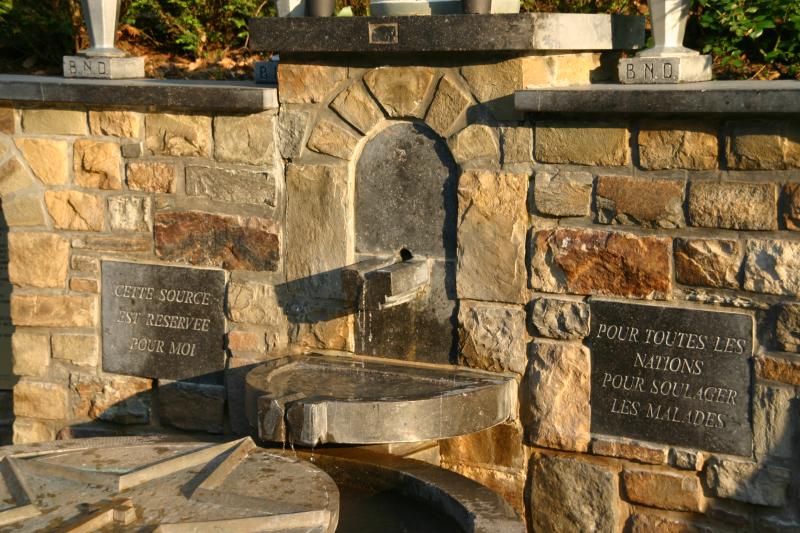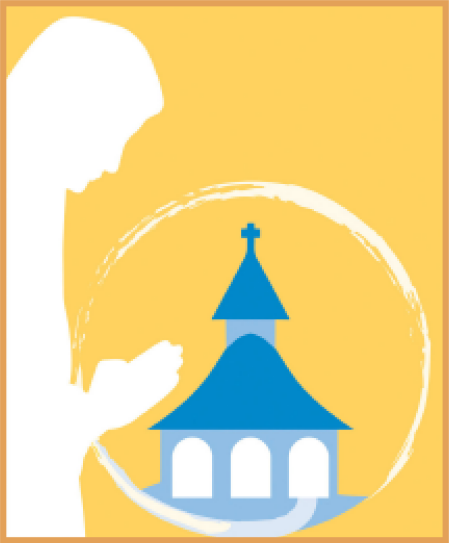
On Wednesday evening, 18th January 1933, the Beautiful Lady appeared for the second time and led the little Mariette for the first time at the Spring.
The spring is about 100 meters from the Beco house. Water gushed from the embankment and poured into the ditch. A farmer dug the ground a little so that the water stagnated there: when he passed by with his few cows, they could drink there.
“Push your hands in the water,” says the Beautiful Lady to the child. We had to push our hands in the water, and to break the ice ( it was -12°C!) before pushing our hands in cold water. Mariette obeyed Her without knowing the meaning of this gesture. “This spring is reserved for me,” the Lady said. From now on, this spring at the edge of the road will no longer be an improvised livestock watering place. She will have other place.
And indeed, the next day, the Virgin of the Poor says that this source is for all nations, especially the sick.
Banneux water is not intended for consumption, although it is true that many pilgrims drink it. The Virgin of the Poor encourages us to make the gesture of Mariette: “Push your hands in the water.”
What does the spring mean? Little (de) biblical tour.
Every spring evokes the beginning. Now at the beginning of the Christian life there is the water of baptism.
Here is the water! What prevents me from receiving baptism? The question that an Ethiopian posed to the deacon Philip who made him discover Jesus Christ. He gave the order to stop the chariot, and both descended into the water… and Philip baptised him (Acts 8: 37).
“This spring is for all nations”: listening to the Virgin, one cannot help thinking of the last word of Jesus in the Gospel according to St. Matthew: All authority in heaven and on earth has been given to me. Go therefore and make disciples of all nations, baptizing them in the name of the Father and of the Son and of the Holy Spirit, and teaching them to obey everything that I have commanded you. And remember, I am with you always, to the end of the age (Matthew 28: 18-20).
At the well of Jacob, Jesus promises “living water” to a woman from Samaria. Everyone who drinks of this water will be thirsty again, but those who drink of the water that I will give them will never be thirsty. The water that I will give will become in them a spring of water gushing up to eternal life (John 4: 10-14).
Water here symbolises the Holy Spirit: Let anyone who is thirsty come to me, and let the one who believes in me drink. As the scripture has said, ‘Out of the believer’s heart shall flow rivers of living water.’ Now he said this about the Spirit, which believers in him were to receive; for as yet there was no Spirit, because Jesus was not yet glorified (John 7: 37-39).
The sacrament of baptism is inseparable from water. It is also a blessing for the sick because water also has a healing, purifying and invigorating virtue.
The prophet Elisha sends the Syrian Naaman to Jordan who suffers from a skin disease. Go, wash in the Jordan seven times, and your flesh shall be restored and you shall be clean… But Naaman became angry and went away, he turned and went away in a rage. Finally, he has the humility to accept it. So he went down and immersed himself seven times in the Jordan, according to the word of the man of God; his flesh was restored like the flesh of a young boy, and he was clean (2 Kings 5: 10 and 14).
Therefore, to go to Banneux is a pilgrimage to the sources of our faith. “Virgin of the Poor, lead us to Jesus, the source of grace!”






